Day-660
Quiz-summary
0 of 5 questions completed
Questions:
- 1
- 2
- 3
- 4
- 5
Information
DAILY MCQ
You have already completed the quiz before. Hence you can not start it again.
Quiz is loading...
You must sign in or sign up to start the quiz.
You have to finish following quiz, to start this quiz:
Results
0 of 5 questions answered correctly
Your time:
Time has elapsed
You have reached 0 of 0 points, (0)
Categories
- Not categorized 0%
- 1
- 2
- 3
- 4
- 5
- Answered
- Review
-
Question 1 of 5
1. Question
1. It is a folk theatre form in Rajasthan, Haryana, Uttar Pradesh, and Malwa region of Madhya Pradesh. It is considered as the most ancient folk theatre form of India. Two important styles of this theatre are Rohtak and Haathras. Nautanki and Tamasha originated from this folk-dance theatre.
Which one of the following folk theatres is being mentioned in the above paragraph?Correct
Answer: C
Explanation:
Swang is a folk dance–theatre form in Rajasthan, Haryana, Uttar Pradesh, and Malwa region of Madhya Pradesh. It is considered as the most ancient folk theatre form of India. Two important styles of Swang are: Rohtak and Haathras. Nautanki and Tamasha originated from this folk dance theatre.

Additional information:
Bhavai
● It is a traditional theatre form of Gujarat
● The centers of this form are Kutch and Kathiawar.
● In this theatre form, both devotional and romantic sentiments are used.



Jatra
● This form was born and nurtured in Bengal
● It became popular due to Chaitanya Mahaprabhu influence
● The earlier form of Jatra was musical. Dialogues were added at a later stage.
● Fairs in honor of gods, or religious rituals and ceremonies are also conducted


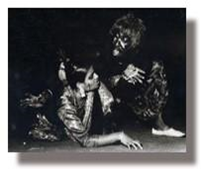
Maach
● It is a traditional theatre form of Madhya Pradesh.
● Songs are given more prominence than the dialogues.
● The tunes of this theatre form are known as Rangat.


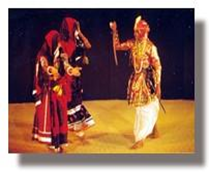 Incorrect
Incorrect
Answer: C
Explanation:
Swang is a folk dance–theatre form in Rajasthan, Haryana, Uttar Pradesh, and Malwa region of Madhya Pradesh. It is considered as the most ancient folk theatre form of India. Two important styles of Swang are: Rohtak and Haathras. Nautanki and Tamasha originated from this folk dance theatre.



Additional information:
Bhavai
● It is a traditional theatre form of Gujarat
● The centers of this form are Kutch and Kathiawar.
● In this theatre form, both devotional and romantic sentiments are used.



Jatra
● This form was born and nurtured in Bengal
● It became popular due to Chaitanya Mahaprabhu influence
● The earlier form of Jatra was musical. Dialogues were added at a later stage.
● Fairs in honor of gods, or religious rituals and ceremonies are also conducted



Maach
● It is a traditional theatre form of Madhya Pradesh.
● Songs are given more prominence than the dialogues.
● The tunes of this theatre form are known as Rangat.



-
Question 2 of 5
2. Question
2. Consider the following pairs:
Archeological sites – Situated in
1. Historical Group of Dhamnar – Madhya Pradesh
2. Bhojeshwar Mahadev Temple – Odisha
3. Khooni Bhandara – Uttar Pradesh
4. Gond monuments of Ramnagar – Rajasthan
How many of the pairs given above are correctly matched?Correct
Answer: A
Explanation:
Given below are correctly matched pairs
Archeological sites – Situated in
1) Historical Group of Dhamnar – Madhya Pradesh
2) Bhojeshwar Mahadev Temple – Madhya Pradesh
3) Khooni Bhandara – Madhya Pradesh
4) Gond monuments of Ramnagar – Madhya Pradesh
Additional information:
Historical Group of Dhamnar:
● The Dhamnar caves are located on a hill near the village of Dhamnar.
● This rock cut site consists of a total of 51 caves of varying sizes carved into the laterite hill.
● The hill consists of two groups of structures, the series of Buddhist caves and the hindu temple complex known as the Dharmarajeshwara temple, also called Dharmanath temple.


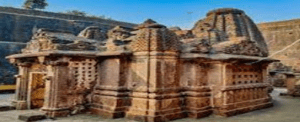
● The caves have been mentioned by three different accounts of explorers James Tod who visited the site in 1821, James Furgusson in 1845 and later by Alexander Cunningham who visited the site in 1864-65.
Bhojeshwar Mahadev Temple
● The origin of the town of Bhojpur can be credited to Raja Bhoj, the same man who founded Bhopal in the 11th century AD.
● The 12th century Bhojeshwar Temple is considered to be one of the finest examples of temple architecture in the region.
● At its core is the abstract representation of the deity Shiva, or ‘linga’, in the temple sanctum.


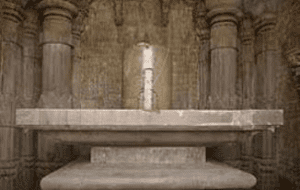
Khooni Bhandara
● Khooni Bhandara is an underground water management system comprising eight waterworks.
● These Mughal period waterworks of Burhanpur form one of the most significant historic water systems in India.
● It was built on similar Persian qanat approach in 1615 CE


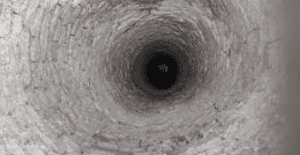
Gond monuments of Ramnagar, Mandla: The cluster of monuments include the following:
1) Moti Mahal (Rajmahal), Ramnagar, Mandla
2) Raibhagat ki Kothi, Ramnagar, Mandla
3) Vishnu Mandir (Suraj mandir), Ramnagar, Mandla
4) Begum Mahal, Chaugan Rayotwari, Mandla
5) Dalbadal Mahal, Chaugan Ryotwari, MandlaIncorrect
Answer: A
Explanation:
Given below are correctly matched pairs
Archeological sites – Situated in
1) Historical Group of Dhamnar – Madhya Pradesh
2) Bhojeshwar Mahadev Temple – Madhya Pradesh
3) Khooni Bhandara – Madhya Pradesh
4) Gond monuments of Ramnagar – Madhya Pradesh
Additional information:
Historical Group of Dhamnar:
● The Dhamnar caves are located on a hill near the village of Dhamnar.
● This rock cut site consists of a total of 51 caves of varying sizes carved into the laterite hill.
● The hill consists of two groups of structures, the series of Buddhist caves and the hindu temple complex known as the Dharmarajeshwara temple, also called Dharmanath temple.



● The caves have been mentioned by three different accounts of explorers James Tod who visited the site in 1821, James Furgusson in 1845 and later by Alexander Cunningham who visited the site in 1864-65.
Bhojeshwar Mahadev Temple
● The origin of the town of Bhojpur can be credited to Raja Bhoj, the same man who founded Bhopal in the 11th century AD.
● The 12th century Bhojeshwar Temple is considered to be one of the finest examples of temple architecture in the region.
● At its core is the abstract representation of the deity Shiva, or ‘linga’, in the temple sanctum.



Khooni Bhandara
● Khooni Bhandara is an underground water management system comprising eight waterworks.
● These Mughal period waterworks of Burhanpur form one of the most significant historic water systems in India.
● It was built on similar Persian qanat approach in 1615 CE



Gond monuments of Ramnagar, Mandla: The cluster of monuments include the following:
1) Moti Mahal (Rajmahal), Ramnagar, Mandla
2) Raibhagat ki Kothi, Ramnagar, Mandla
3) Vishnu Mandir (Suraj mandir), Ramnagar, Mandla
4) Begum Mahal, Chaugan Rayotwari, Mandla
5) Dalbadal Mahal, Chaugan Ryotwari, Mandla -
Question 3 of 5
3. Question
3. With reference to the Sahitya Akademi, consider the following statements:
1. It is an autonomous body funded by the Ministry of Education.
2. It undertakes literary activities only in languages mentioned in the eighth Schedule of the Indian Constitution.
Which of the statements given above is/are correct?Correct
Answer: D
Explanation:
Statement 1 is incorrect: It is an autonomous body that is funded by the Ministry of Culture.
Statement 2 is incorrect: It undertakes literary activities in over 24 Indian languages. Apart from the 22 languages that are mentioned in the Constitution of India, the Sahitya Akademi gives recognition to two more languages: English and Rajasthani.
Additional information:
Sahitya Akademi
● In 1954, the Indian government formed the “National Academy of Letters,” or Sahitya Akademi.
● The major purpose of this organization was to serve as a national organization dedicated to promoting literary culture in India, as well as to cultivate and coordinate literature in all Indian languages and to promote the country’s general national unity.
● For the last few years their collective focus has shifted to the preservation of the oral and tribal literature.
● Our ancient society and traditional knowledge was transferred as oral knowledge and
that needs to be preserved for the coming generations. It has also tried to reach to a wider audience through the organization of literary gatherings like: Samvad, Meet the Author, Kathasandi, Mulakat, Asmita, etc.Incorrect
Answer: D
Explanation:
Statement 1 is incorrect: It is an autonomous body that is funded by the Ministry of Culture.
Statement 2 is incorrect: It undertakes literary activities in over 24 Indian languages. Apart from the 22 languages that are mentioned in the Constitution of India, the Sahitya Akademi gives recognition to two more languages: English and Rajasthani.
Additional information:
Sahitya Akademi
● In 1954, the Indian government formed the “National Academy of Letters,” or Sahitya Akademi.
● The major purpose of this organization was to serve as a national organization dedicated to promoting literary culture in India, as well as to cultivate and coordinate literature in all Indian languages and to promote the country’s general national unity.
● For the last few years their collective focus has shifted to the preservation of the oral and tribal literature.
● Our ancient society and traditional knowledge was transferred as oral knowledge and
that needs to be preserved for the coming generations. It has also tried to reach to a wider audience through the organization of literary gatherings like: Samvad, Meet the Author, Kathasandi, Mulakat, Asmita, etc. -
Question 4 of 5
4. Question
4. Consider the following pairs:
Paintings – States
1. Lepakshi Paintings – Andhra Pradesh
2. Sittanavasal Cave Paintings – Odisha
3. Armamalai Cave Paintings – Tamil Nadu
4. Jogimara Cave Paintings – Chhattisgarh
How many of the above pairs are correctly matched?Correct
Answer: C
Explanation:
Given below is correctly matched pairs:
Paintings – States
1) Lepakshi Paintings – Andhra Pradesh
2) Sittanavasal Cave Paintings – Tamil Nadu
3) Armamalai Cave Paintings – Tamil Nadu
4) Jogimara Cave Paintings – Chhattisgarh
Additional information:
● Lepakshi Paintings: In the 16th century, mural paintings were painted on the walls of Veerabhadra temple in Lepakshi. They were created during the Vijayanagara period and have a religious theme centred on the Ramayana, Mahabharata, and Vishnu’s incarnations. Primary colours, particularly blue, are conspicuously absent from the paintings.
● Sittanavasal Cave (Arivar Koil) Paintings: These murals have a striking resemblance to paintings from Bagh and Ajanta. Not only are there artwork on the walls, but also on the ceiling and pillars. The paintings are based on the Jain Samavasarana subject.
● Armamalai Cave Paintings: Cave Paintings are situated in the Vellore district of Tamil Nadu, these natural caves were converted into a Jain temple in the 8th century. Unbaked mud structures are located within the cave, which acts like a place of rest for Jain saints.
● The beautiful colourful paintings on the walls and roof depict the tales of Astathik Palakas (deities protecting eight corners) and Jainism.
● Jogimara Cave Paintings: Jogimara Cave Paintings is an artificially carved-out cave located in the Surguja district of Chhattisgarh. It is dated back around 1000-300 BC and has a few paintings and inscriptions of a love story in Brahmi script. The cave is said to be an attachment to the amphitheatre and paintings were made to decorate the room.Incorrect
Answer: C
Explanation:
Given below is correctly matched pairs:
Paintings – States
1) Lepakshi Paintings – Andhra Pradesh
2) Sittanavasal Cave Paintings – Tamil Nadu
3) Armamalai Cave Paintings – Tamil Nadu
4) Jogimara Cave Paintings – Chhattisgarh
Additional information:
● Lepakshi Paintings: In the 16th century, mural paintings were painted on the walls of Veerabhadra temple in Lepakshi. They were created during the Vijayanagara period and have a religious theme centred on the Ramayana, Mahabharata, and Vishnu’s incarnations. Primary colours, particularly blue, are conspicuously absent from the paintings.
● Sittanavasal Cave (Arivar Koil) Paintings: These murals have a striking resemblance to paintings from Bagh and Ajanta. Not only are there artwork on the walls, but also on the ceiling and pillars. The paintings are based on the Jain Samavasarana subject.
● Armamalai Cave Paintings: Cave Paintings are situated in the Vellore district of Tamil Nadu, these natural caves were converted into a Jain temple in the 8th century. Unbaked mud structures are located within the cave, which acts like a place of rest for Jain saints.
● The beautiful colourful paintings on the walls and roof depict the tales of Astathik Palakas (deities protecting eight corners) and Jainism.
● Jogimara Cave Paintings: Jogimara Cave Paintings is an artificially carved-out cave located in the Surguja district of Chhattisgarh. It is dated back around 1000-300 BC and has a few paintings and inscriptions of a love story in Brahmi script. The cave is said to be an attachment to the amphitheatre and paintings were made to decorate the room. -
Question 5 of 5
5. Question
5. In the context of Ancient India, the terms ‘Bali’, ‘Bhaga’ and ‘Shulka’ refer to:
Correct
Answer: A
Explanation:
The terms ‘Bali’, ‘Bhaga’ and ‘Shulka’ refer to the forms of regular tributes and taxes.
● At different times and in different sources, these words had different meanings. For example, bali could mean a religious tax, a land tax, an emergency tax, or simply tax in general.
● Bhaga usually described the part of the spoils of war due to the king, or the king’s share. It may also have been a synonym for bali.
● The term ‘Shulka’ was more like a toll tax, or a customs duty levied at ferries, passes, roads, etc
Economy during the ancient India:
● Generally, land revenue implies collection of taxes on land produce. The king in ancient India was entitled for a share based on the income or spiritual merits.
● The authority and jurisdiction of the king was extended over the activities of his subjects.
● The collection of taxes was one of the most important branches of administration.
● The appointment of a regular hierarchy of officers for carrying on the administration was the duty of the king.
● This share of the state or the tax was not permanently fixed. It varied according to the exigencies of state finance.Incorrect
Answer: A
Explanation:
The terms ‘Bali’, ‘Bhaga’ and ‘Shulka’ refer to the forms of regular tributes and taxes.
● At different times and in different sources, these words had different meanings. For example, bali could mean a religious tax, a land tax, an emergency tax, or simply tax in general.
● Bhaga usually described the part of the spoils of war due to the king, or the king’s share. It may also have been a synonym for bali.
● The term ‘Shulka’ was more like a toll tax, or a customs duty levied at ferries, passes, roads, etc
Economy during the ancient India:
● Generally, land revenue implies collection of taxes on land produce. The king in ancient India was entitled for a share based on the income or spiritual merits.
● The authority and jurisdiction of the king was extended over the activities of his subjects.
● The collection of taxes was one of the most important branches of administration.
● The appointment of a regular hierarchy of officers for carrying on the administration was the duty of the king.
● This share of the state or the tax was not permanently fixed. It varied according to the exigencies of state finance.

